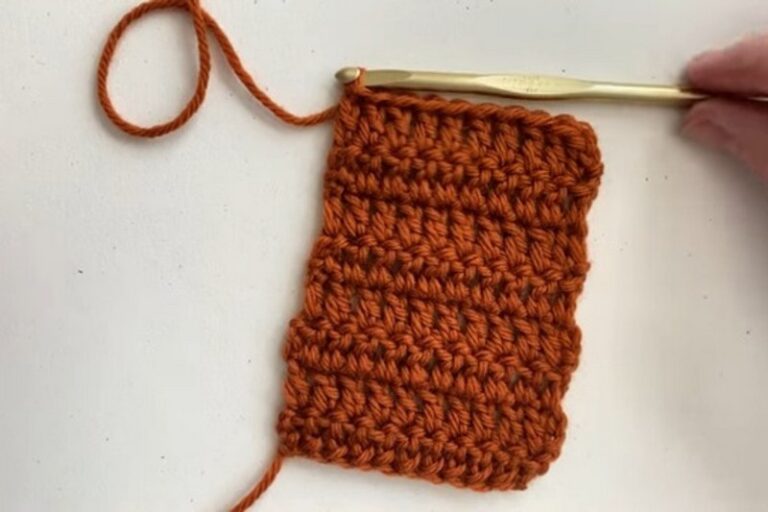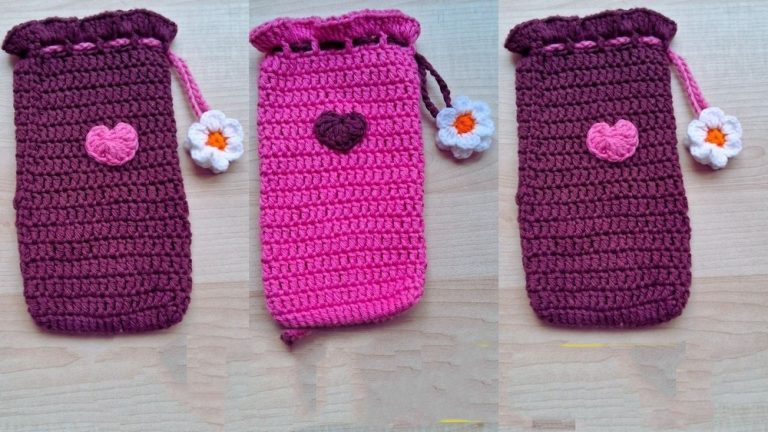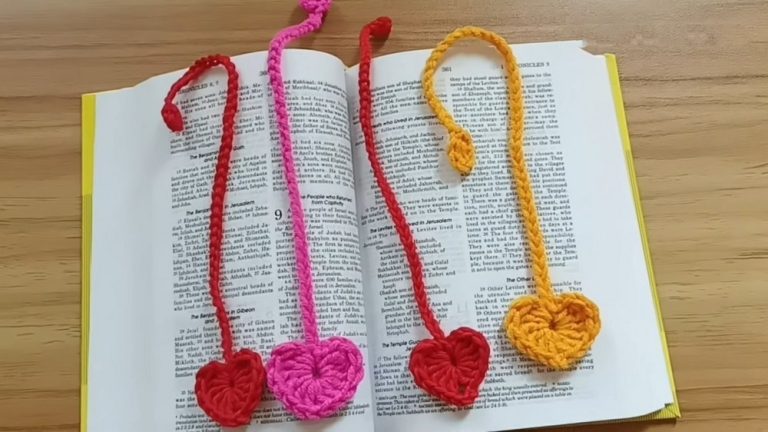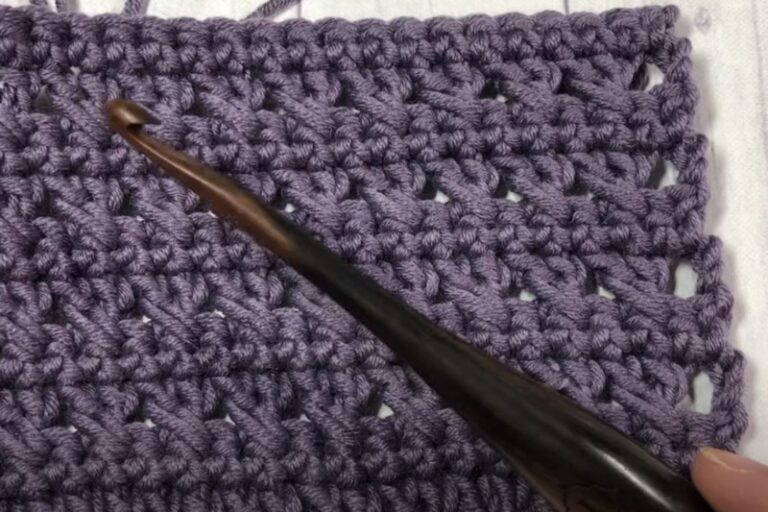How to Crochet Jellyfish Tapestry Tutorial

Learn how to crochet a jellyfish tapestry using tapestry crochet techniques, with switching colors seamlessly to achieve a clean design. Beginners are advised to use the free Stitch Fiddle tool for easier navigation of the pattern.
The tutorial emphasizes the importance of working neatly with loose ends and offers tips for framing the piece with a slip-stitched border for a polished finish. Follow through with us for more details about this project!

Crochet Jellyfish Tapestry Tutorial
This video tutorial demonstrates how to crochet a jellyfish tapestry. It covers starting with a chain and working the initial rows in white single crochet. The tutorial then details switching colors to create the jellyfish pattern, emphasizing clean color changes.
It also includes instructions for attaching new yarn and adding a slip stitch border to finish the piece.

Introduction to the Project
- The video begins with an overview of the crochet project, which involves creating a jellyfish design using tapestry crochet techniques.
- Four colors are required for the project, but the specific yarn weight and hook size are flexible.
- The creator uses a 6 mm crochet hook and matching yarn for demonstration purposes.
- Viewers can follow the pattern either by screenshotting the image displayed on the screen or using a linked stitch fiddle tool for easy row tracking.
- The stitch fiddle website is free and highly recommended for beginners as it simplifies color changes and pattern visualization.
Getting Started: Foundation Chain
- The tutorial starts with instructions for forming a slip knot and chaining 17 stitches (plus one additional stitch for turning).
- Instead of working through the front loops of the foundation chain, the creator emphasizes the importance of working through the back loops for a cleaner bottom edge.
- Detailed instructions are provided on how to insert the hook into the back bump for single crochet rows.
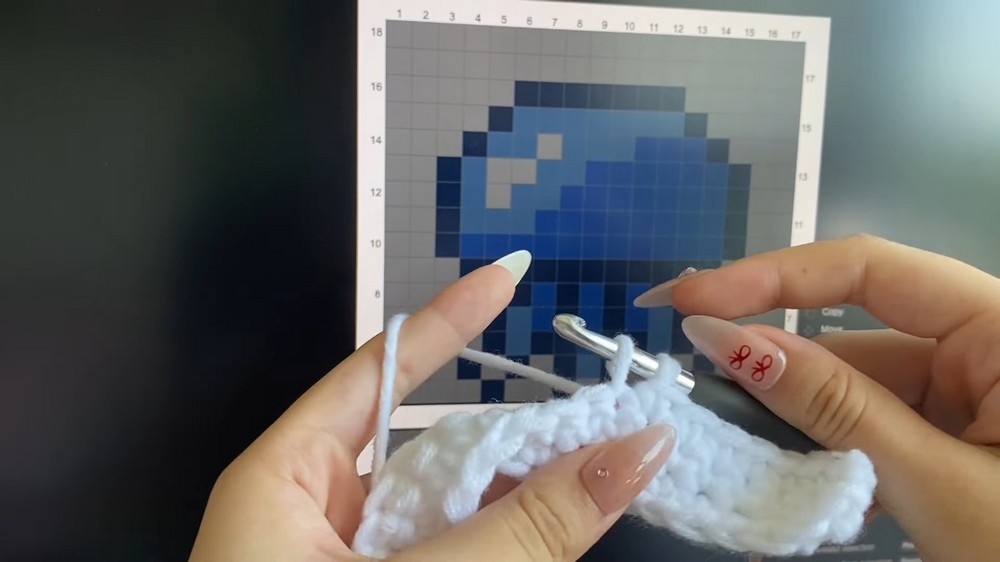
Establishing the Base Rows in White
- The initial two rows of the project consist entirely of single crochets in white yarn.
- After completing the first row, the creator demonstrates how to turn the work without adding a chain before starting the second row.
- Clear guidance is given on continuing single crochet stitches to complete these base rows.
Color Changes: Switching to Blue Yarn
- Starting with row three, color changes are introduced, requiring careful attention to tapestry crochet techniques.
- The creator explains how to switch from white to blue yarn midway through a stitch by completing a “half single crochet” and pulling through with the new color.
- Instructions highlight the importance of tension control during color changes, ensuring the yarn remains secure without curling the project.

Tapestry Crochet Techniques
- The video focuses heavily on color-switching methods, such as alternating between white and blue yarn and incorporating shorter runs of single crochet for intricate details.
- Viewers are advised to keep all loose ends on the backside to maintain a clean front side.
- The creator also provides clarity on managing multiple color changes in quick succession, referring to it as “checkerboard” stitching.
Dealing with Complicated Rows
- Rows with frequent color changes, such as the bottom half of the jellyfish, are described as the hardest part of the pattern.
- The creator reassures viewers that while the process may seem tedious at first, it becomes easier as the project progresses.
- Additional colors are introduced in the later rows, such as a lighter shade of blue, following similar attachment techniques as demonstrated earlier.

Completing the Jellyfish Top Half
- The tutorial transitions to working on the top half of the jellyfish design, where fewer color switches are needed.
- It is noted that the top section helps flatten out any bulkiness caused by the dense color changes in the bottom half.
- Clear instructions are provided on ensuring the tapestry remains consistent with the pattern chart, as the left and right sides are not interchangeable.

Adding the Border
- After completing the jellyfish tapestry, the creator demonstrates how to add a border using slip stitches around the edges.
- A smaller hook size (5 mm) is used for smooth framing.
- Corners are rounded off by working additional slip stitches, enhancing the neatness of the finished product.
Finishing Touches: Handling Loose Ends
- Final tips include tying off the yarn securely after completing the border and deciding whether to weave in the loose ends.
- The creator shares a personal preference for cutting off loose ends rather than weaving them in, noting it does not compromise the durability of the tapestry.

